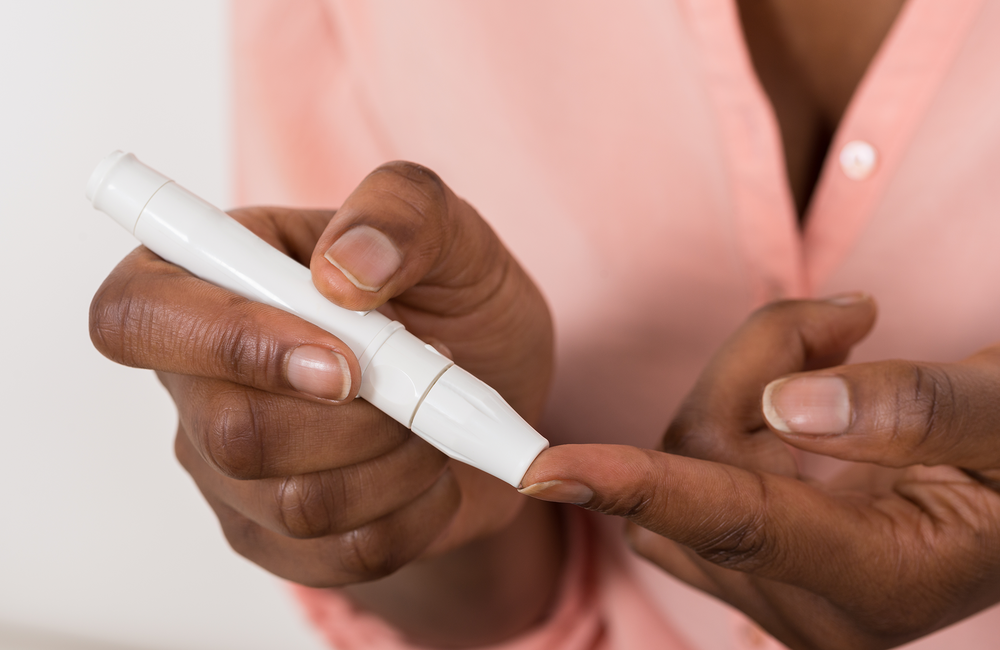
Diabetes is associated with a 25% reduction in concentrations of the key anti-HIV drug tenofovir, investigators from the United States reported in the online edition of the Journal of Acquired Immune Deficiency Syndromes. Dr Sarah Mann and her co-investigators at the University of Colorado examined tenofovir diphosphate concentrations in dried blood spots obtained from 523 people living with HIV. After taking into account a range of factors that can affect levels of anti-HIV drugs in the blood, such as adherence, they found that tenofovir concentrations were reduced by a quarter in people with diabetes mellitus compared to those without diabetes.
While suggesting that the difference may be because of how diabetes affects the way the body processes medicines, the researchers called for further studies to explain these findings. It is important to see if diabetes-related falls in antiretroviral drug levels increase the risk of higher viral loads, drug resistance and treatment failure.
“These findings reflect the need to expand our understanding of the biological, behavioral, and social characteristics that are associated with drug exposure in people living with HIV and at risk of HIV acquisition,” commented Dr Mann and her colleagues.
Dr Mann wanted to see if the presence of three potentially serious non-HIV-related conditions – diabetes mellitus, high blood pressure (hypertension) and increased blood lipids (hyperlipidaemia) – affected tenofovir concentrations in dried blood spots.
Measuring antiretroviral concentrations in dried blood spots is a good way of predicting outcomes such as viral suppression and resistance in people taking antiretrovirals.
Their study population consisted of 523 people living with HIV and taking a regimen that contains tenofovir disoproxil fumarate (TDF). These individuals received care between 2014 and 2017 and were followed for 48 weeks. Dried blood spots were obtained on three occasions during this period. At the same time, participants were asked to provide information on their adherence to their HIV treatment combination.
Forty one per cent of patients had at least one co-morbidity. The most common were hypertension (30%) and hyperlipidaemia (28%), followed by diabetes (6%). A total of 19 people (4%) had all three co-morbidities. Of the individuals with diabetes, 58% also had hypertension and hyperlipidaemia and only 18% had diabetes alone. Data was not collected about cardiovascular, kidney and liver disease, nor the severity of diabetes.
The average age was 45 years. Most of the participants (86%) were male, 58% were White, average CD4 cell count was 592 and the majority (88%) had a viral load below 200. Although 49% overall were taking a 'booster' drug, the figure increased to 64% for people with diabetes.
Initial analysis showed no overall association between co-morbidities and tenofovir dried blood spot concentrations.
However, when Dr Mann and her co-investigators performed a second analysis looking at drug concentrations according to specific illnesses, they found that people with diabetes had a statistically significant 25% reduction in tenofovir dried blood concentrations compared to participants without diabetes. Importantly, the researchers adjusted their results to take into account factors that can affect antiretroviral drug levels, such as age, body weight, gender, race, kidney function, anti-HIV drug classes and self-reported adherence.
Even when the investigators took viral load into account, they found that drug concentrations were 21% lower among people with diabetes compared to those without (p = 0.003). Further adjustment for the presence of hypertension and hyperlipidaemia also showed a 25% (p < 0.001) reduction in tenofovir concentrations among those with diabetes.
When the authors restricted their analysis to individuals with a viral load below 20, they found that the presence of diabetes was associated with a 12% reduction in tenofovir dried blood spot concentrations, a reduction that was still statistically significant compared to people without diabetes (p = 0.047). Finally, the presence of diabetes remained associated with a 24% (p < 0.001) reduction when Dr Mann and her colleagues took into account the use of an antiretroviral booster.
Nonetheless, the rates of viral suppression were similar in people with or without diabetes.
It is already known that diabetes can alter the way the body processes some drugs. Reductions have been observed for some antibiotics and anti-tuberculosis therapies. Reasons for this include reduced drug absorption in the gut and alterations in the way the body distributes drugs around the body. Plasma proteins and enzyme levels, both important in drug processing and absorption, can also be adversely affected by diabetes. Impaired liver function and chronic inflammation could also have a role.
An alternative explanation for the findings could be a reduction in red blood cell half life, associated with diabetes, which by itself could explain the variations in tenofovir concentrations seen in the study.
“These potential explanatory mechanisms reflect the need for further in vitro [laboratory] and in vivo [human] research to elucidate the complexity of tenofovir absorption, cell loading and pharmacokinetics in patients with diabetes mellitus and other non-AIDS comorbidities,” wrote the authors.
Dr Mann and her colleagues also expressed concern about the potential clinical implications of lower antiretroviral drug concentrations related to diabetes.
“Future studies should consider if dose modifications of tenofovir (and potentially other drugs) might be necessary in people living with HIV and diabetes, or other comorbidities”.
Mann SC et al. Lower cumulative antiretroviral exposure in people living with HIV and diabetes mellitus. Journal of Acquired Immune Deficiency Syndromes, published online ahead of print 22 July 2020.
doi: 10.1097/QAI.0000000000002460
